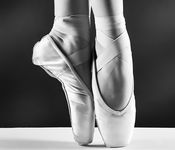Why don't ballerinas get dizzy?
 To understand why classically trained ballerinas can do pirouettes one after another without getting dizzy, researchers studied eye reflexes and the parts of the brain that became activated in dancers.
To understand why classically trained ballerinas can do pirouettes one after another without getting dizzy, researchers studied eye reflexes and the parts of the brain that became activated in dancers.
The participants were put in a revolving chair that the scientists spun around in the dark. The results compared with a control group (young women rowers) showed that dancers did not feel dizzy for as long. The images obtained using MRI (magnetic resonance imaging) also showed that the zone of the cerebellum receiving the dizzy signals is smaller in dancers.
The authors of the study assume that this zone gets smaller over many years of dancing, so that presumably the brain can adapt and become more resistant to the feeling of dizziness.
Source: Nigmatullina Y et al. The Neuroanatomical Correlates of Training-Related Perceptuo-Reflex Uncoupling in Dancers. Cereb. Cortex, 2013 doi: 10.1093/cercor/bht266.







